Basic Processes Using Blade Dicing Saws
Solutions
This is a list of processes that can be performed using the standard functions in blade dicing saws.
Full Cut
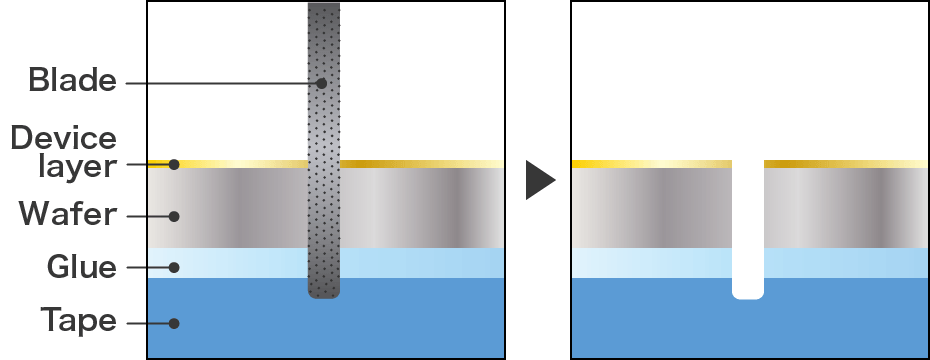
Full cut is the most basic processing method, and completely cuts the workpiece by cutting up to the securing material, such as the dicing tape. The wafer dicing process is the most well-known process in semiconductor manufacturing, and full cutting is used for several materials and in several areas.
This process is possible with all dicing saws.
Half Cut
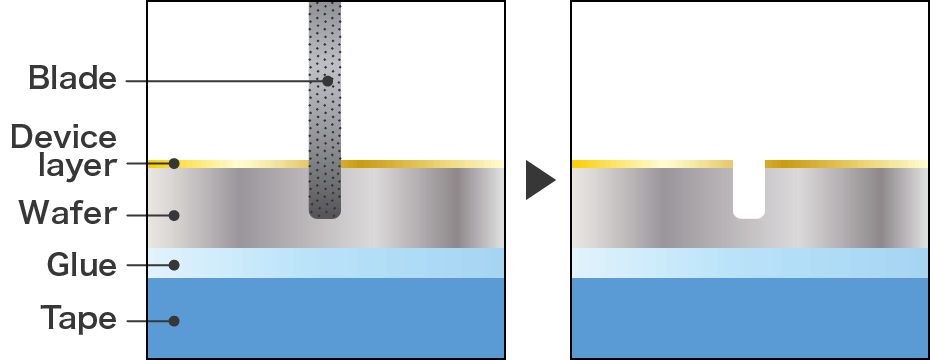
Half cut is a processing method that creates grooving by cutting up to the middle of the workpiece.
It is possible to produce comb- and needle point-shapes by continuously performing the grooving process. In semiconductor manufacturing, half cutting is used in the DBG process, which is a process where grooves are first created through half cutting, and then thinning and die separation are performed at the same time by grinding.
This process is possible with all dicing saws.
Dual Cut
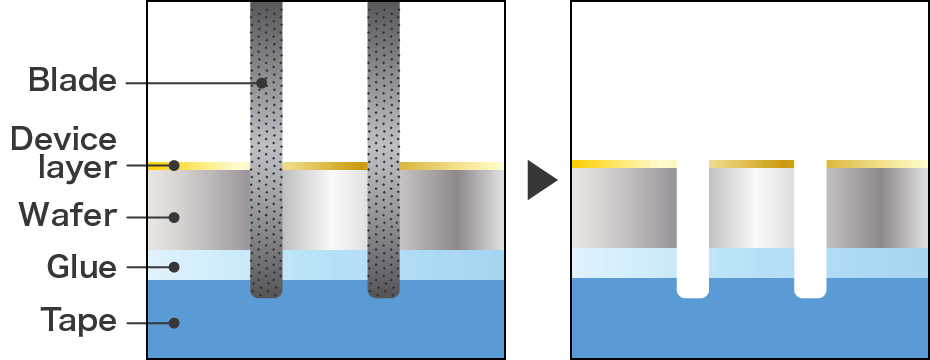
Dual cut is a processing method that performs full cutting or half cutting for two lines at the same time using a dual dicing saw, which has two spindle axes. High throughput can be achieved with this process.
This process is possible with dual dicing saws, such as DFD6363 and DAD3651.
Step Cut
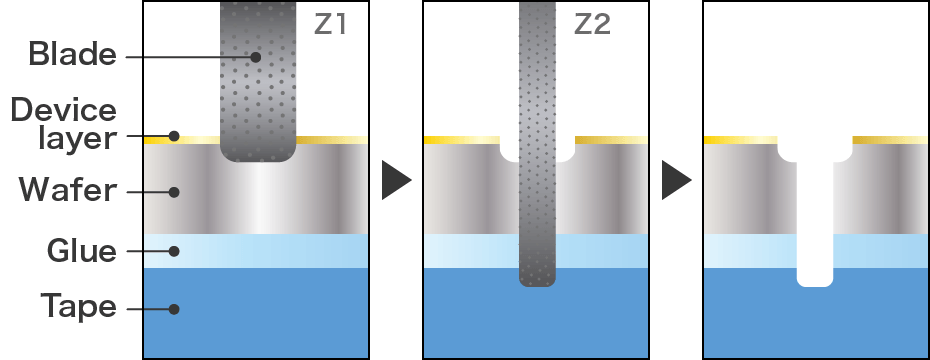
Step cut is a processing method that performs full cutting and half cutting in two phases using a dual dicing saw, which has two spindle axes.
In semiconductor manufacturing, a wiring layer is formed on the wafer surface. Thus, the wafer is processed in two phases using a blade optimized for cutting the wiring layer, and a blade optimized for the remaining silicon single crystal, resulting in high-quality processing.
This process is possible with dual dicing saws, such as DFD6363 and DAD3651.
Bevel Cut

Bevel cut is a processing method that cuts the wafer in two phases using a blade with a V-shaped edge on the half cut side during step cut.
Chamfering process is performed during cutting in this process. Therefore, high die strength and high quality processing can be achieved.
This process is possible with dual dicing saws, such as DFD6363 and DAD3651.
Chopper Cut
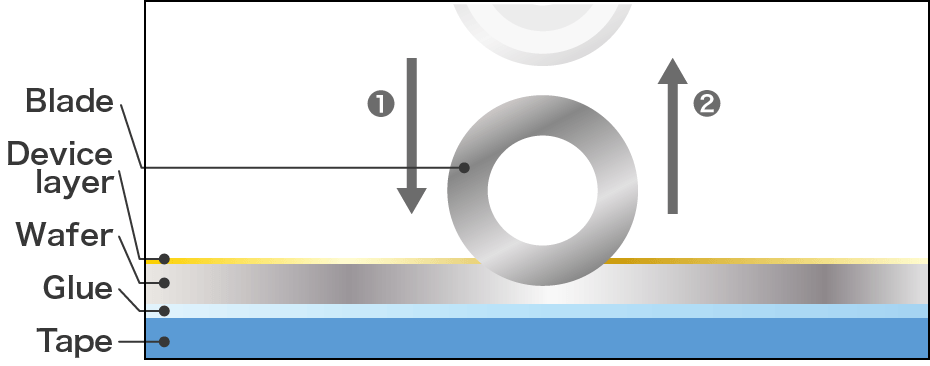
In general, when using a dicing saw, cutting is performed by lowering the blade up to a designated cut depth, and the workpiece is cut when it passes underneath the blade. When using the chopper cut, it is possible to cut into the workpiece vertically, as the blade is lowered from directly above the workpiece.
This processing method is used when performing partial grooving.
This process is possible with all automatic dicing saws (DAD).
Chopper Traverse
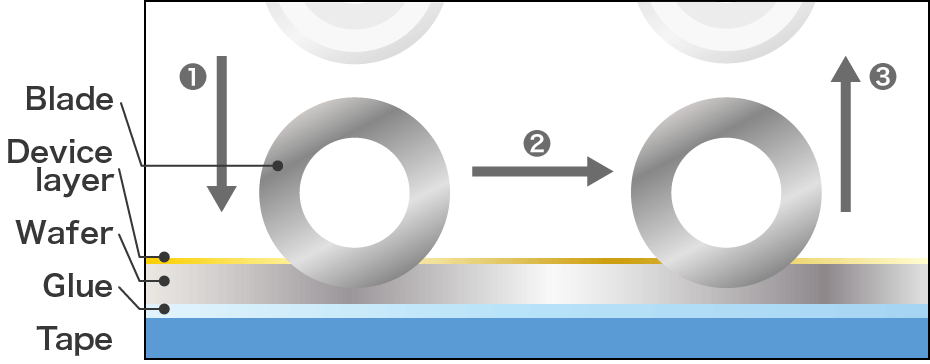
Chopper traverse is a processing method that cuts the workpiece by moving it horizontally during the chopper cut. This processing method is used when making partial cuts.
This process is possible with all automatic dicing saws (DAD).
Processing Irregular Shaped Die (Triangle, Parallelogram, Diamond, Strip)
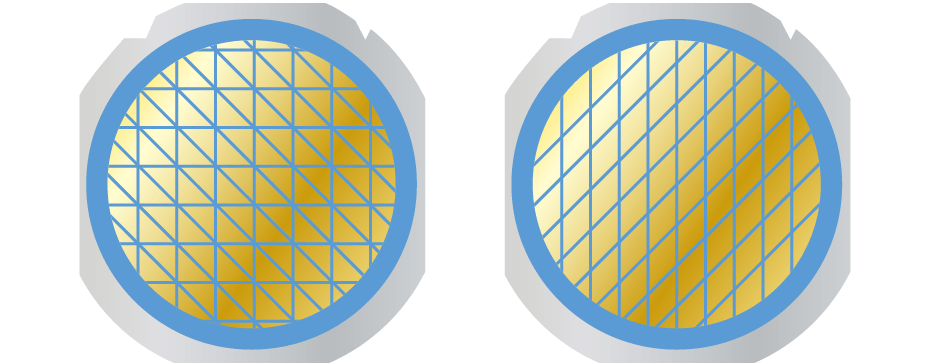
In general dicing, the processing table is rotated 90° in the vertical and horizontal directions to cut the workpiece into a square or rectangular shape.
However, because DISCO's processing tables can be rotated freely, it is possible to cut the workpiece into several shapes, such as parallelograms or diamonds. In addition, by cutting the workpiece three times while changing the angle of the processing table, it is possible to make a triangle-shaped workpiece. On the other hand, by processing the workpiece in one direction only, it is possible to make a strip-shaped workpiece.
These process are possible with all dicing saws.
Contact
Please feel free to contact us with any questions or inquiries.
-

Applications Support
A free-of-charge test cut is performed at an application lab to confirm whether achieving the customer's needs is possible.
Details -

Dicing and Grinding Service
It is effective in sample and prototype manufacturing during development or low-volume production. Designated engineers will provide support based on the desired leadtime and at reasonable cost.
Details
